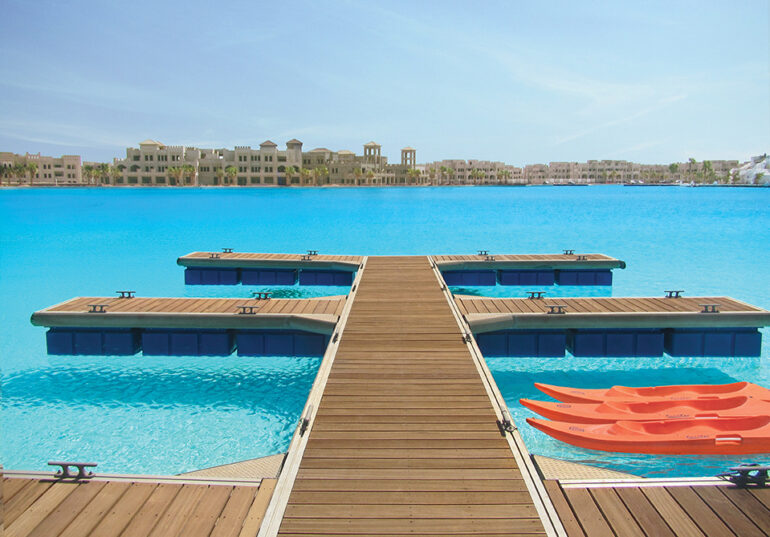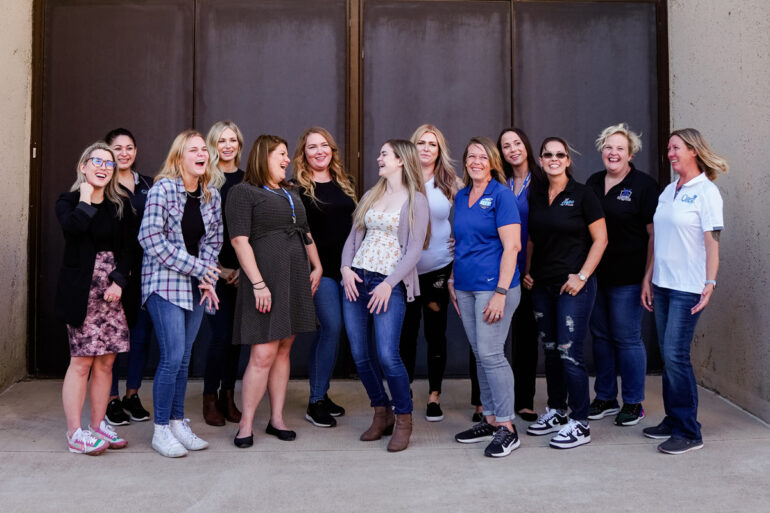Swim with Your Fish
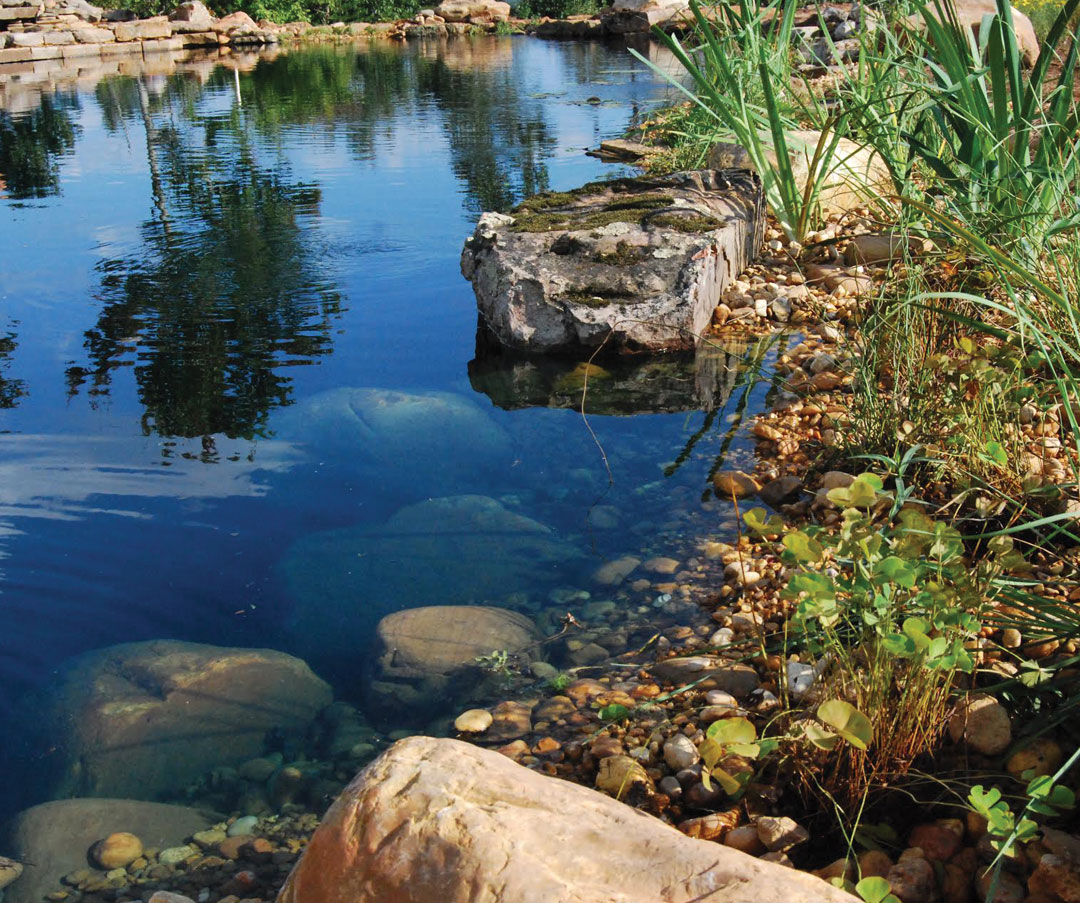
Michael Hilleary’s industrial-design education initially led him to a job designing zoo exhibits. Once, he fashioned an exhibit with clear, clean, chemical-free water for otters to play. It gave him an idea.
“After watching the animals enjoy swimming, I began to think about how people could enjoy the same quality of water,” Hilleary says. From that, Total Habitat of Lawrence, Kansas, was born and Hilleary has been offering chemical-free swimming pools ever since.
Anthony Archer-Wills, owner of Anthony Archer-Wills, LLC out of Copake Falls, New York, started building ponds in 1963 for his own amusement. “These were for fish and aquatic plants, both of which I found fascinating.” His goal was to achieve crystal-clear water, for which he started experimenting with plants and under gravel filtration.
By 1980, Archer-Wills transitioned into natural swimming pools as a result of customer demand, occasionally getting requests for a completely natural swimming pond because of allergies to typical pool chemicals. “It was a logical progression to use the methods developed purifying water for fish to adapt this for people,” he says. While writing a research paper on sustainable alternatives to chemically treated swimming pools, Alan Weene came across BioNova Natural Pools in Chester, New Jersey. After spending most of his life somehow connected to swimming pools — whether as a swim instructor, lifeguard or certified pool operator — Weene joined BioNova in 2012 as its chief technology officer, designer and head of marketing. He frequently conducts educational seminars for homeowners and industry professionals on natural swimming pool technology.
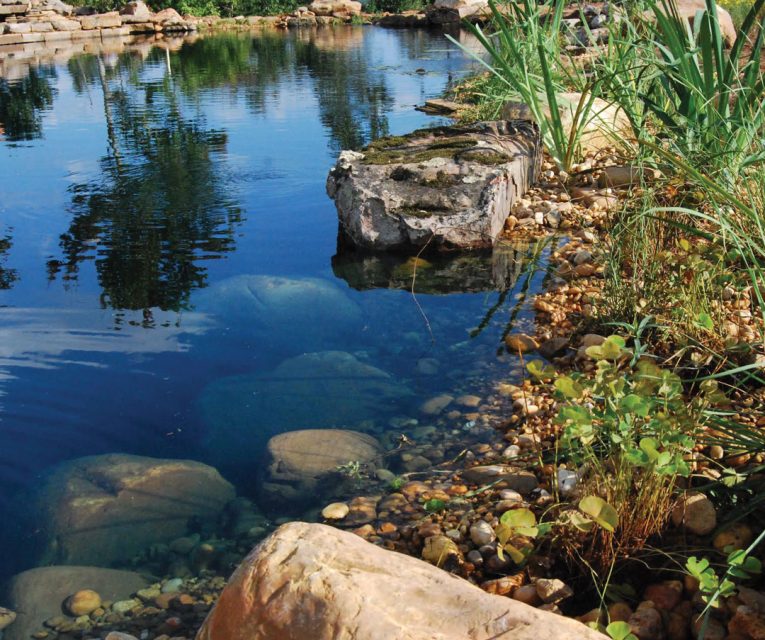
The 411 on Natural Pools
“A natural pool is like an aquarium,” Hilleary says, “but with bigger filters and a sustainable design. We clean water like nature has been doing for a few billion years,” through gravel beds and/or aquatic plants to purify the water through the production of beneficial microbes.
The initial cost of a natural pool is higher than a traditional pool, Archer-Wills says, so it can take a few years before it is offset by the savings on chemicals. They also take up more space because of the natural vegetation required to sustain the proper ecosystem.
“During the first couple of years, an NSP might experience some ‘growing pains’ as the ecosystem continues to stabilize,” Weene says. “The appearance of filamentous algae and changes in water clarity are completely normal and should be expected, and some replanting may be necessary in spring after the first or second year of operation. But the constructed wetlands ecosystem becomes increasingly stable over time.”
The NSP approach could be beneficial in a number of ways. As Archer-Wills mentioned, they cost less to run than traditionally constructed pools with a smaller pump and no chemicals to buy. This also means that they are environmentally responsible, with a sizably smaller carbon footprint associated with usage. Weene emphasizes the promotion of biodiversity and habitat restoration. And both agree the swimming experience is greatly enhanced with design, which is only limited by the imagination.
Natural pools can even withstand a little neglect. Day-to-day maintenance, Weene says, includes skimming leaves from the surface of the water, brushing the floor and walls, checking the filter, using the pool cleaning robot and cleaning the skimmer baskets — just as with traditional pools. “The big difference is that, instead of testing and balancing pool chemicals, about the same amount of time will be spent maintaining the plants by trimming, pruning, weeding, removing organic debris and fertilizing as needed.”
While winterization may be required in locations with colder temperatures, Hilleary mentions that NSP owners in these areas can leave it uncovered for the winter and use it for ice skating.
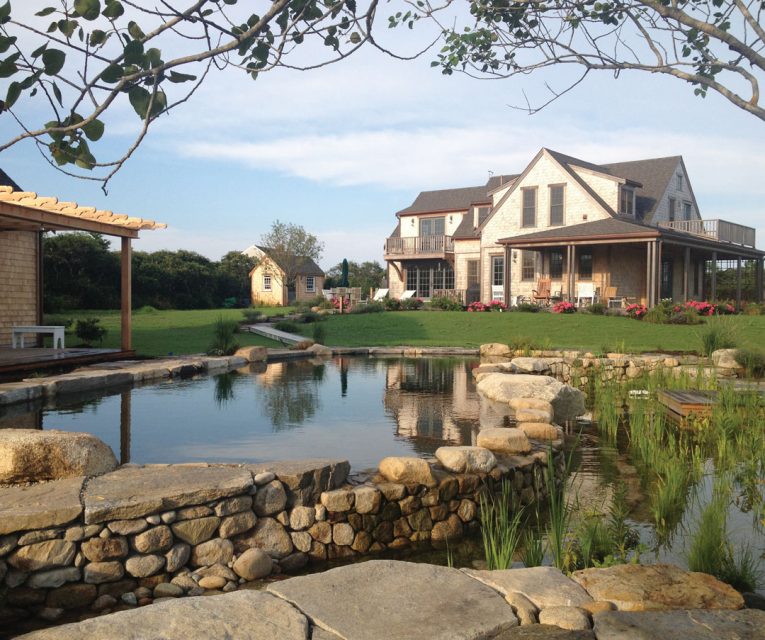
BioNova: The first BioNova natural swimming pool built in the United States, in Nantucket, Massachusetts, in 2012, features an infinity edge and native plantings. 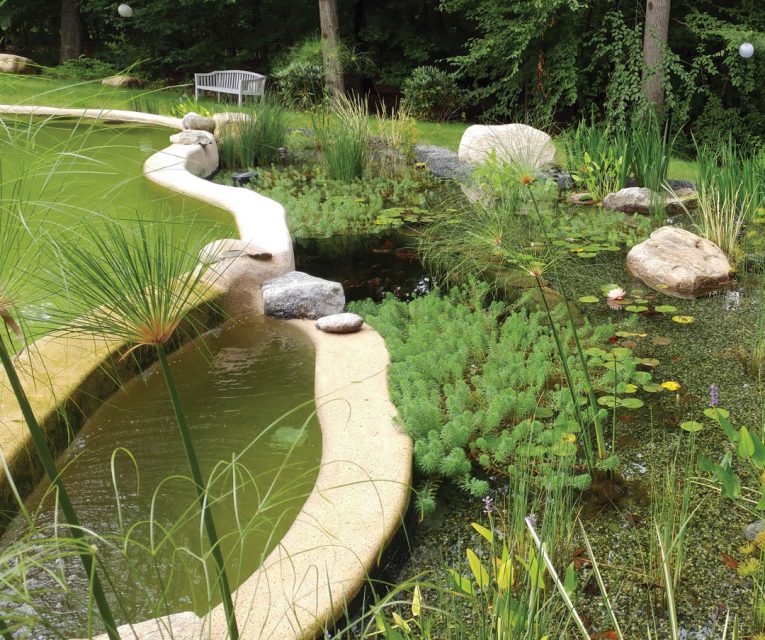
BioNova 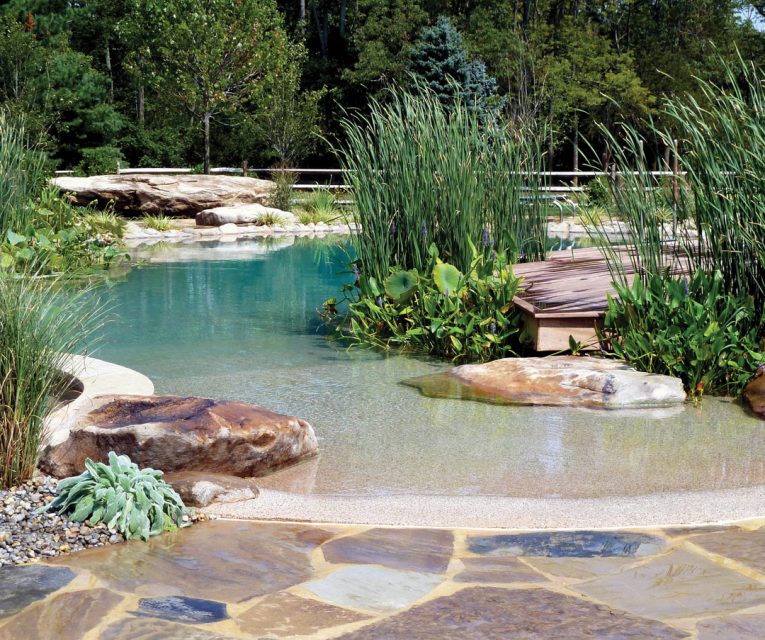
BioNova: This pool in Princeton, New Jersey, features a beach entry, pebble plaster interior finish and natural stone boulders. 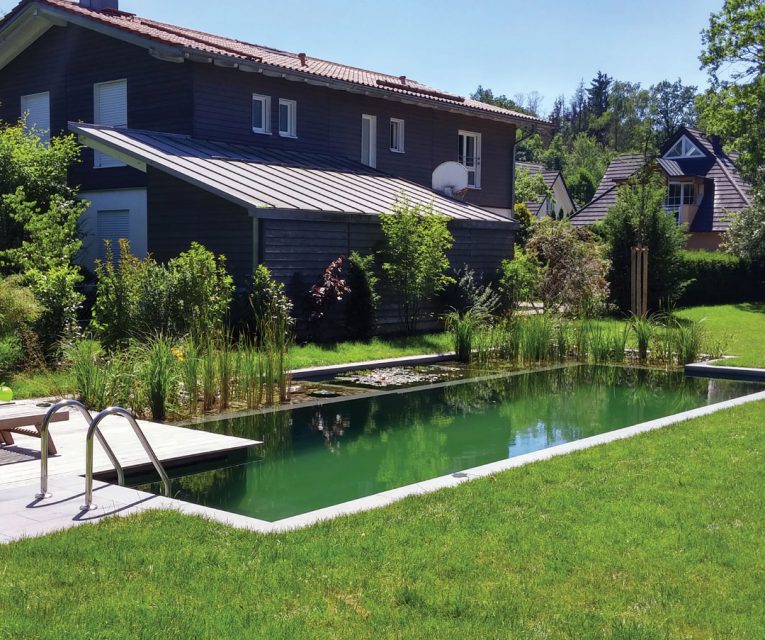
BioNova: This classic-shaped natural swimming pool in Munich, Germany, has a 750-square-f00t footprint and traditional stone coping.
Natural Pool Construction
If you’re looking into NSPs, remember that because they are specifically designed, engineered and permitted as swimming pools, they are also subject to all building codes and regulations that relate to safety, accessibility, electrical bonding, anti-vortex drain compliance, diving envelope and the like, Weene says.
A top priority with construction is the ability to adequately retain water, Archer-Wills says. “Constant heavy water loss can lead to an influx of salts, minerals, nutrients and even pollutants, all of which can feed algae and lead to cloudy or unpleasant water.” He adds that faulty construction is typically to blame, including edge detail. “Capillary action can cause water to be sucked out over the side where porous surfaces come in contact with both land and water,” Archer-Wills says.
“A natural swimming pool is always completely closed-loop and contained with a waterproofing membrane, such as PoolHide 60 mil PVC membrane or gunite with an interior plaster finish,” Weene explains. The swimming area must have a physical separation from the wetlands regeneration zone. “This can be accomplished with an underwater retaining wall in a single-chamber design, or by constructing the pool and regeneration zone or zones in completely autonomous vessels that are physically separated by the landscape or by a change in elevation,” he adds.
Because of the natural development of microbes to clean the water, Hilleary says natural pools often have slick surfaces, so you should avoid putting steps in the design, and instead use ladders and walk-in pebble beaches for access.
And Archer-Wills says the bio-filtration area should be as large as possible. “Apart from the water passing gently through the gravel beds, the aquatic plants are of great importance,” he adds. “A lush planting of gorgeous emergent plants together with water lilies not only play a crucial part in cleaning the water, but also look beautiful and greatly enhance the bathing experience and surroundings.”
Weene recommends all natural swimming pools follow the European FLL Guidelines for construction of natural bathing waters. “For the system to be successful, the filtration equipment, substrates and aggregates, source water, material selection, aquatic plants, pumps, hydraulics and flow rates must all be very carefully evaluated and selected,” he says. He also recommends builders align themselves with a proven and patented systems provider to ensure the quality, consistency, longevity and sustainability of installation.
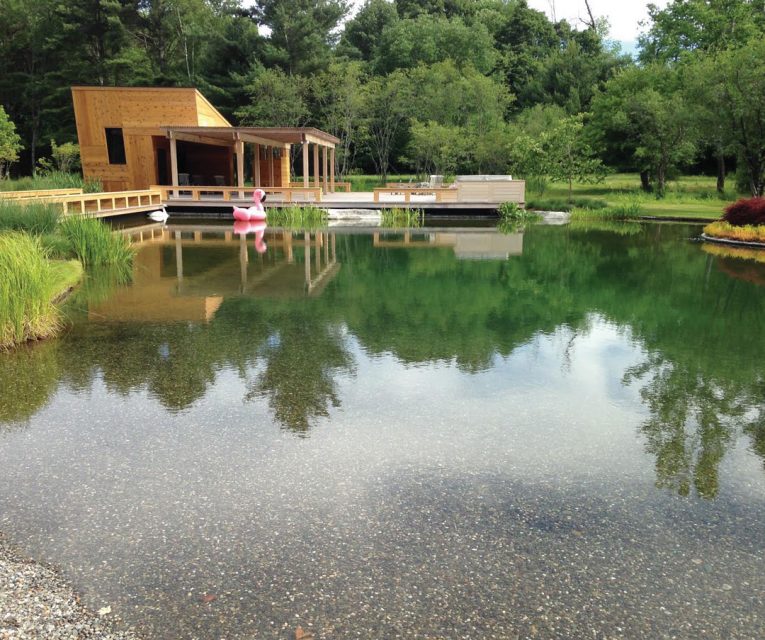
Anthony Archer-Wills: This pool in Massachusetts was designed for swimming and is purified by biofiltration using settlement tanks, a large gravel filter and extensive aquatic planting areas. The tanks are concealed beneath the cedar bridge and connected to the equipment room below the changing rooms. Both projects were designed by Archer-Wills, and executed by Aquatic Construction Services and Bervy Excavation Corp. 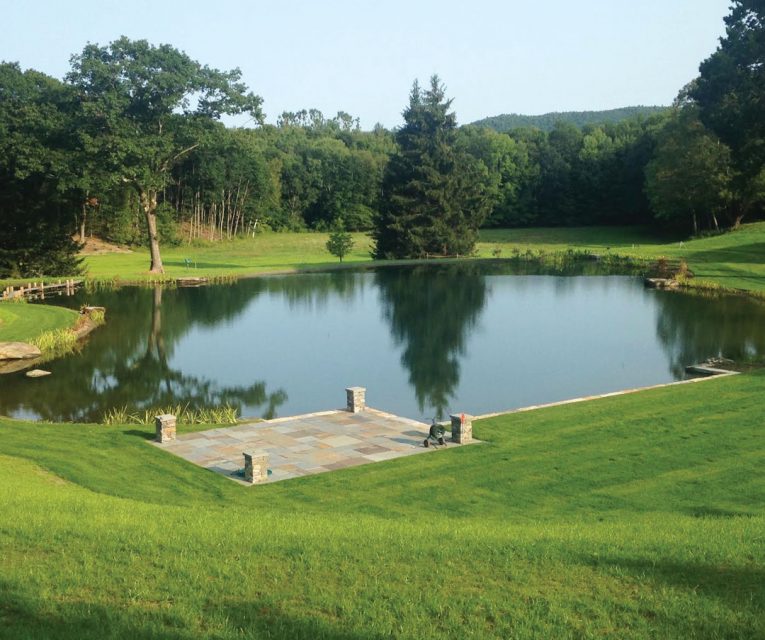
Anthony Archer-Wills: This large pond in Massachusetts was built for trout fishing, swimming in summer and skating during winter. It has an upflow biofilter with lotus and water lilies, which is crossed by a boardwalk for viewing. Water flows through the pond, and exits over a stone waterfall and into a large downflow with many types of aquatic plants.
Natural Pool Sustainability
A natural swimming pool is a biologically active living ecosystem. But that doesn’t mean it is without maintenance or that it’s completely self-sustaining. Customers and builders alike will need to remain actively involved in maintaining the created ecosystem.
While enzymes aren’t normally necessary, Archer-Wills says they can be used to regulate the correct biological balance when the NSP is first established. “Maintenance is often minimal, however, a cutting back of vegetation and leaf removal in the autumn is required,” he adds. “Also, a spring check to replace any plants that may not have survived the winter might be necessary.”
Hilleary and the BioNova system do add a UV sterilizer to the bio-filtration process. “We also use starter bacteria to get things rolling, but as time goes on, natural pools need little additional treatments,” he says. “Giving the pool a good vacuuming two or three times a year is a terrific way to stay on top of things. In natural pools, we are trying to grow a rich micro biome, so as times goes by, natural pools work better.”
Should you offer natural pools?
With the differences between a traditional swimming pool and a natural swimming pool in mind, these NSP experts agree that most any pool builder can offer natural pools to their customers. “Any professional who has the knowledge, resource and experience to build a traditional chemical pool can also build a natural swimming pool,” Weene says. “The physical construction of the pool vessel is the same, it’s ‘what’s under the hood’ that makes a NSP uniquely different from traditional pools.”
“It’s basically a glorified aquarium with gravel filter and plants,” Archer-Wills says. “However, there are many aspects to it that require a thorough understanding. I would recommend a training class from one of the well-credited instructors such as Genesis or BioNova.”
BioNova does offer training and support for the design, construction, aesthetics and maintenance of NSPs, including multiple classroom and jobsite training programs in the U.S. throughout the year. Additionally Total Habitat has an e-book available called Natural Pools & Ponds: THE TOTAL GUIDE. “It’s a complete how-to manual with theory, methods, illustrations and drawings,” Hilleary says. “We have not held anything back — all our company secrets are revealed.” Total Habitat also offers training events periodically. While natural swimming pools are certainly a niche market, they offer an alternative to traditional chemical pools for potential customers who prioritize a natural lifestyle. “Pool builders can think of NSPs as yet another option for clients looking for a water feature, too,” Hilleary says. “It’s a different experience, where you can swim with your fish.”




